|
TRANSLATE THIS ARTICLE
Integral World: Exploring Theories of Everything
An independent forum for a critical discussion of the integral philosophy of Ken Wilber
 David Christopher Lane, Ph.D.
Professor of Philosophy, Mt. San Antonio College Lecturer in Religious Studies, California State University, Long Beach Author of Exposing Cults: When the Skeptical Mind Confronts the Mystical (New York and London: Garland Publishers, 1994) and The Radhasoami Tradition: A Critical History of Guru Succession (New York and London: Garland Publishers, 1992). David Christopher Lane, Ph.D.
Professor of Philosophy, Mt. San Antonio College Lecturer in Religious Studies, California State University, Long Beach Author of Exposing Cults: When the Skeptical Mind Confronts the Mystical (New York and London: Garland Publishers, 1994) and The Radhasoami Tradition: A Critical History of Guru Succession (New York and London: Garland Publishers, 1992).
THE STUDY OF CONSCIOUSNESS
Glimpses into the Life and Work of Great Thinkers in Neuroscience and Philosophy
Chalmers |
Changeux |
Chomsky |
Churchland, Paul |
Churchland, Patricia |
Crick |
Dennett |
Edelman |
Flanagan |
Humphrey |
Huxley |
Koch |
Leary |
Lilly |
McKenna |
Nagel |
Tononi
Patricia ChurchlandVikraant ChowdhryPatricia Smith Churchland was born on July 16, 1943 and was raised on a small farm in British Columbia. Even though her parents didn't have any education past middle school, they always were inclined towards science and imparted a secular worldview on Patricia. Despite the surrounding farming community chalking college up to be a waste of money, Patricia was pushed by her parents to attend college and she graduated with honors from the University of British Columbia in 1965. She then continued on to study at Oxford as a graduate student studying philosophy. 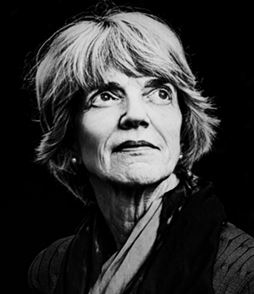 Patricia Smith Churchland During her time at Oxford, she was immersed in a culture of what she describes as “armchair philosophy”. After her studies she worked as an assistant professor at the University of Manitoba However, by 1978, she had concluded that this conceptual analysis inherently ignored facts. She realized that neuroscience was necessary to study in order to come to empirically based philosophical conclusions. She began communicating with Dr. Baskerville-Hyde, the head of the Neuroanatomy Department where she taught, and was encouraged to sit in on his lectures to further her theories. She soon looked to complete her training by focusing on neurophysiology and worked with Dr. Larry Jordan in his spinal cord laboratory. She then moved to San Diego to teach at UCSD in 1984 due to the school's thriving neuroscience department and encouragement from her friend Francis Crick. With Crick, she formed a neuroscience group at Salk Institute which was across the street from UCSD. After fully exploring her theories, she released her first book named Neurophilosophy: Toward a Unified Theory of the Mind/Brain in 1986. In the first part of the book she gives an overview of neuroscience. In the second part, she expands on previous eliminative materialism arguments by providing the philosophy of science that supported such thinking. She also addressed arguments from anti reductionists and dualists. Lastly, she delved into three theories of brain function. Her main intent of this book was to stress the importance of using empirical facts to analyze the philosophy of the mind. This book was meant as a way to introduce both sides, neuroscientists and philosophers, to the need to combine their work in order to come to a true model of how the brain can answer age old philosophical questions. She believed that current neuroscience could explain the actual process of learning, the idea of self-control, and the nature of consciousness itself.
Soon after she began working with neuroscientist Terry Sejnowski to build a conceptual framework for how the brain works. In their joint book, The Computational Brain they come provide an overview of developments in the emerging field of computational neuroscience. In this book they attempted to make a case for the need to analyze groups of neurons in order to understand brain function rather than extrapolating all of brain function from a single neuron. They did this by demonstrating that their artificial neural network that was trained to handle difficult computational problems had similar patterns as those examined in real neuron groups. They also answered questions about how the mind represents visual stimulus and they argue that the brain is essentially a computer that is chemical in nature. They suggested that in order to understand how the brain deals with inputs and creates outputs we needed to understand the structure of how neurons interact. Her work after this focused on consciousness, morality and the sense of self. She argues that all of these principles can be understood after examining the brain's functioning and understanding evolutionary principles. She explores the implications of neuroscience on morality in her book Braintrust: What Neuroscience Tells Us about Morality. In this book she explains that mammals at some point found it beneficial to develop an attachment to the offspring while reptiles lay their eggs and continue on with their lives. She concluded that morality is the result of evolution and learned social behavior working together to shape our feelings about what is right or wrong. Patricia Churchland also explores in depth how evolutionary principles drives bonding and imitation. She then wrote Touching a Nerve: The Self as Brain and explored the implications of exploring the implications of chemical impulses on our notion of pain and suffering.. Her main argument is that understanding how your brain functions is central to having a better understanding of yourself. She also believes that you can appreciate brain biology as an explanation of human function without devaluing one's sense of self. Churchland is best known for advocating for the use of science to provide answers to basic philosophical questions. She blends many disciplines in order to make this larger argument and continues to advocate for the use of interdisciplinary work to come to these revelations. She believes that conscious experience can be reduced down to chemical interactions that are based on evolutionary principles. Her continual synthesis of many fields has helped push forward the field of neurophilosophy and her background in philosophy has helped guide future endeavors along these lines. Further Reading1. Neurophilosophy, A Bradford Book; Reprint edition (September 7, 1989) 2. The Computational Brain, A Bradford Book; 1st edition (June 12, 1992) 3. Conscience: The Origins of Moral Intuition, W. W. Norton & Company; 1 edition (June 4, 2019) 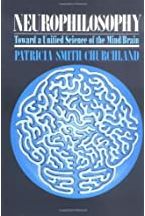 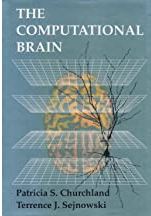 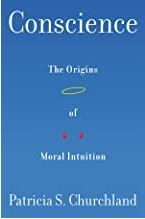
The neurobiological platform for moral valuesPatricia S. ChurchlandThough expressions of moral values can vary across cultures, they are not arbitrary, in the way that the conventions for funerals or weddings tend to be. Matters of etiquette, though important for smoothing social interactions, are not serious and momentous as moral values are. Truth-telling and promise keeping are socially desirable in all cultures, and hence exhibit less dramatic variability than customs at weddings. Is there a gene for these behaviors? Though that hypothesis cannot be ruled out, there is so far no evidence for a truth-telling or a promise-keeping gene. More likely, practices for truth telling and promise-keeping developed in much the same way as practices for boat building. They reflected the local ecology and are a fairly obvious solution to a common social problem (Hoebel, 1954). The neurobiological platform for moral values Being reminded of the variability in what counts as morally acceptable helps us acknowledge that standards of morality are not universal. More generally, it reminds us that moral truths and laws do not reside in Plato's heaven to be accessed by pure reason. It reminds us that perorations about morality are often mixed with a whole range of emotions, including fear, resentment, empathy and compassion (Decety, 2011). 5. Tensions, conventions and balance The mammalian brain is organized both for self-care and to develop care for others, but on many occasions, the two conflict. Social life brings benefits, but it also brings tensions. We compete with siblings and friends for resources and status; we also need to cooperate with them. Some individuals are temperamentally more problematic than others. Sometimes you have to tolerate others who are irritating or noisy or smelly. Social life can often be very subtle, calling for judgment, not strict adherence to rules. As Aristotle and the Chinese philosopher, Mencius, well realized, you cannot prepare for every contingency or for every situation that may crop up in life. Judgment is essential. Sometimes telling a lie is the right thing to do—if it saves the group from a madman threatening to blow up a bomb, for example. Sometimes breaking a promise is the right thing to do—if it prevents a truly terrible catastrophe, such as the meltdown of a nuclear reactor. There are no rules for determining when something is a legitimate exception to prohibitions, such as do not lie, do not break a promise, and do not steal. Children quickly learn about prototypical exceptions, and apply fuzzy-bounded categories rather than hide-bound rules (Killen & Smetana, 2008; Park & Killen, 2010). Balance, as all wise moral philosophers have emphasized, may not be precisely definable, but it is needed to lead a good social and moral life. Not every beggar can be brought home and fed, not all your kidneys can be donated, not every disappointment can be remedied (Schwartz & Sharpe, 2010). Concluding remarksThe capacity for moral behavior is rooted in the neurobiology of sociality, and in mammals depends on nonapeptides oxytocin and vasopressin, as well as on elaborated cortical structures that interface with the more ancient structures mediating motivation, reward, and emotion. The neural mechanisms supporting social behavior are tuned up epigenetically by social interactions and by learning the social practices of the group, and by figuring out how to best deal with new social problems. Emerging after the advent of agriculture and the growth of large groups, organized religions would have built upon existing social practices, perhaps augmenting them in ways relevant to new social demands. Although it is known that oxytocin and vasopressin are critical in social behavior, much about their roles as well as the circuitry with which they interact remains unknown.
MSAC PHILOSOPHY GROUP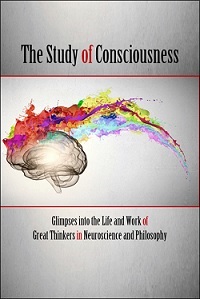
Human interest in the nature of consciousness dates far back to our ancestral past. However, it is only in the last century or so that researchers and philosophers have been able to tackle the problem in a more scientific way. This is primarily due to our increasing understanding of human physiology and how our brain functions. With the advent of ever more sophisticated technology—from fMRI scans, functional magnetic resonance imaging, to DARPA's neural engineering program, understanding neural “dust”—we are now able to not only create vivid simulations of cerebral activity but also to systematically reverse engineer the brain. Whether such empirical observations will unlock the secrets of self-reflective awareness is still open to vigorous debate. Nevertheless, the study of consciousness is now considered to be of elemental importance and has invited a large number of brilliant thinkers—from a wide range of disciplines, including mathematicians, quantum physicists, neuroscientists, and philosophers—to join in the discussions and offer their own contributions. The following essays briefly explore the life and work of pioneers in the field of consciousness studies. Included in this eclectic mix are such notables as Giulio Tononi (University of Wisconsin), Paul and Patricia Churchland (University of California, San Diego), Noam Chomsky (M.I.T.), the late Timothy Leary and Terence McKenna, and Jean Pierre Changeux (Collége de France) among others.
Comment Form is loading comments...
|